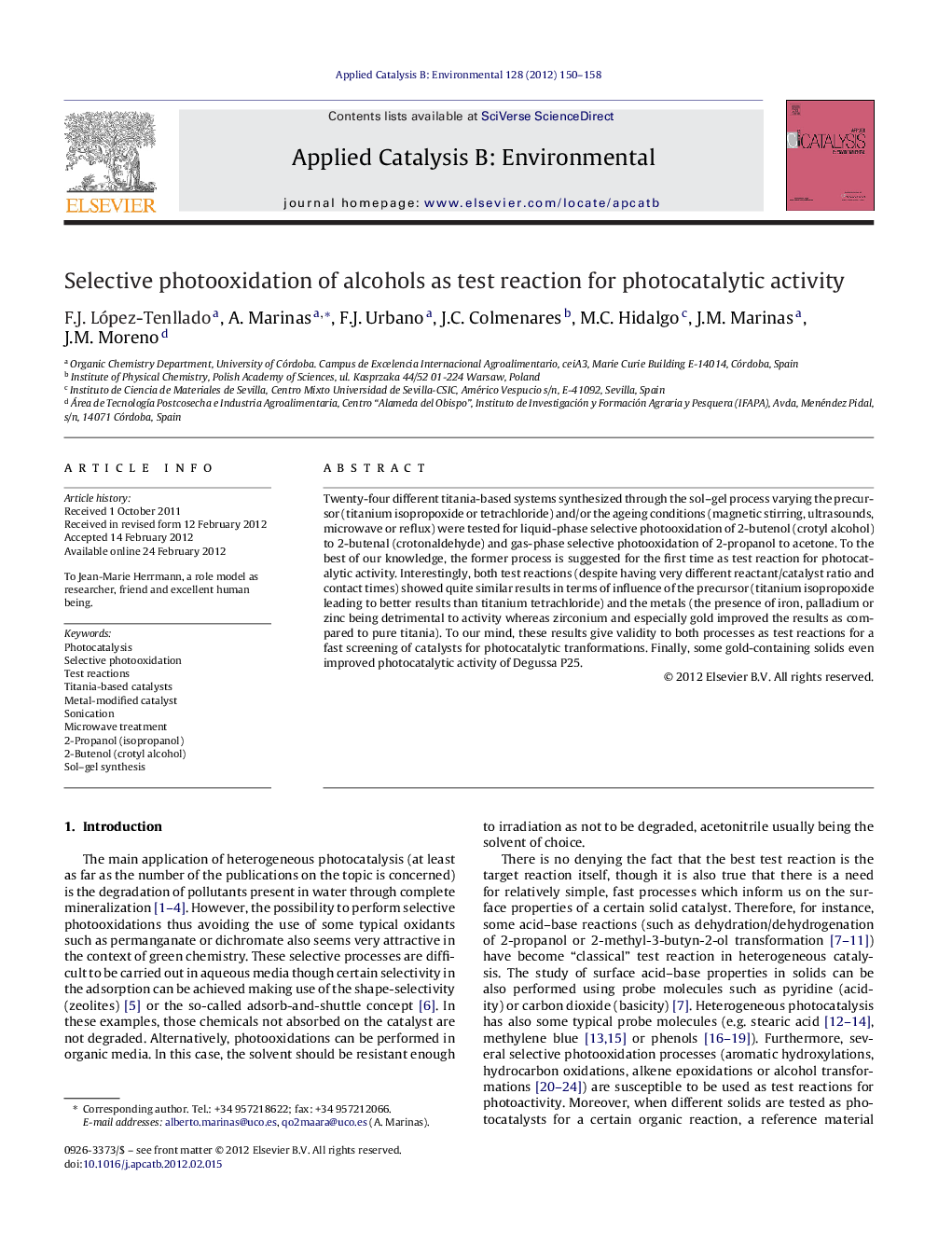| Article ID | Journal | Published Year | Pages | File Type |
|---|---|---|---|---|
| 46623 | Applied Catalysis B: Environmental | 2012 | 9 Pages |
Twenty-four different titania-based systems synthesized through the sol–gel process varying the precursor (titanium isopropoxide or tetrachloride) and/or the ageing conditions (magnetic stirring, ultrasounds, microwave or reflux) were tested for liquid-phase selective photooxidation of 2-butenol (crotyl alcohol) to 2-butenal (crotonaldehyde) and gas-phase selective photooxidation of 2-propanol to acetone. To the best of our knowledge, the former process is suggested for the first time as test reaction for photocatalytic activity. Interestingly, both test reactions (despite having very different reactant/catalyst ratio and contact times) showed quite similar results in terms of influence of the precursor (titanium isopropoxide leading to better results than titanium tetrachloride) and the metals (the presence of iron, palladium or zinc being detrimental to activity whereas zirconium and especially gold improved the results as compared to pure titania). To our mind, these results give validity to both processes as test reactions for a fast screening of catalysts for photocatalytic tranformations. Finally, some gold-containing solids even improved photocatalytic activity of Degussa P25.
Graphical abstractFigure optionsDownload full-size imageDownload as PowerPoint slideHighlights► Reactivity order found for the 25 tested catalysts in both test reactions follow a similar trend. ► Selectivity to crotonaldehyde is a function of the conversion level in all cases. ► Selectivity to acetone is higher than expected for platinum-containing systems. ► Trans/cis isomerization of crotonaldehyde as the reaction proceeds.
